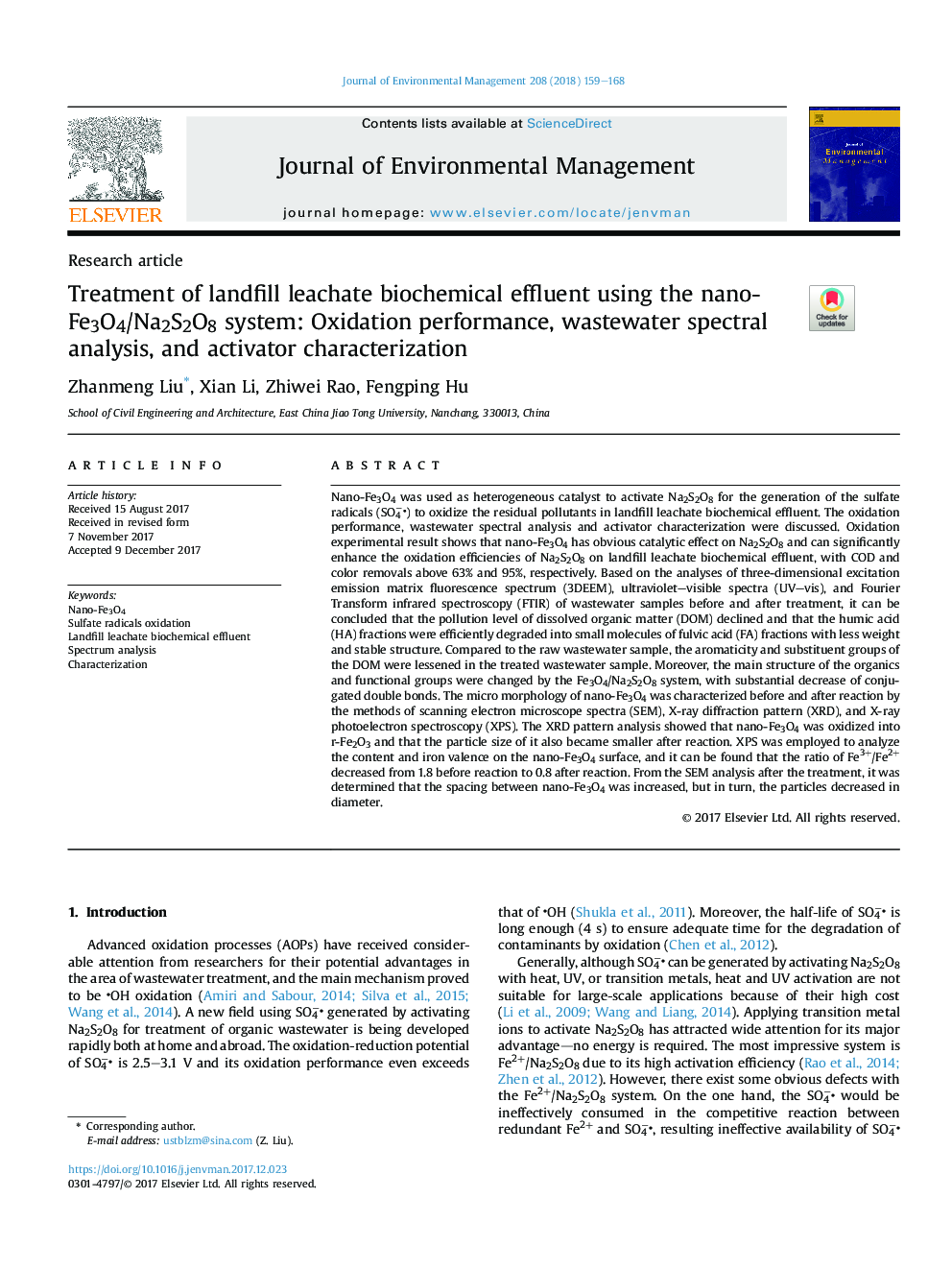| کد مقاله | کد نشریه | سال انتشار | مقاله انگلیسی | نسخه تمام متن |
|---|---|---|---|---|
| 7478330 | 1485210 | 2018 | 10 صفحه PDF | دانلود رایگان |
عنوان انگلیسی مقاله ISI
Treatment of landfill leachate biochemical effluent using the nano-Fe3O4/Na2S2O8 system: Oxidation performance, wastewater spectral analysis, and activator characterization
دانلود مقاله + سفارش ترجمه
دانلود مقاله ISI انگلیسی
رایگان برای ایرانیان
کلمات کلیدی
موضوعات مرتبط
مهندسی و علوم پایه
مهندسی انرژی
انرژی های تجدید پذیر، توسعه پایدار و محیط زیست
پیش نمایش صفحه اول مقاله

چکیده انگلیسی
Nano-Fe3O4 was used as heterogeneous catalyst to activate Na2S2O8 for the generation of the sulfate radicals (SO4â) to oxidize the residual pollutants in landfill leachate biochemical effluent. The oxidation performance, wastewater spectral analysis and activator characterization were discussed. Oxidation experimental result shows that nano-Fe3O4 has obvious catalytic effect on Na2S2O8 and can significantly enhance the oxidation efficiencies of Na2S2O8 on landfill leachate biochemical effluent, with COD and color removals above 63% and 95%, respectively. Based on the analyses of three-dimensional excitation emission matrix fluorescence spectrum (3DEEM), ultraviolet-visible spectra (UV-vis), and Fourier Transform infrared spectroscopy (FTIR) of wastewater samples before and after treatment, it can be concluded that the pollution level of dissolved organic matter (DOM) declined and that the humic acid (HA) fractions were efficiently degraded into small molecules of fulvic acid (FA) fractions with less weight and stable structure. Compared to the raw wastewater sample, the aromaticity and substituent groups of the DOM were lessened in the treated wastewater sample. Moreover, the main structure of the organics and functional groups were changed by the Fe3O4/Na2S2O8 system, with substantial decrease of conjugated double bonds. The micro morphology of nano-Fe3O4 was characterized before and after reaction by the methods of scanning electron microscope spectra (SEM), X-ray diffraction pattern (XRD), and X-ray photoelectron spectroscopy (XPS). The XRD pattern analysis showed that nano-Fe3O4 was oxidized into r-Fe2O3 and that the particle size of it also became smaller after reaction. XPS was employed to analyze the content and iron valence on the nano-Fe3O4 surface, and it can be found that the ratio of Fe3+/Fe2+ decreased from 1.8 before reaction to 0.8 after reaction. From the SEM analysis after the treatment, it was determined that the spacing between nano-Fe3O4 was increased, but in turn, the particles decreased in diameter.
ناشر
Database: Elsevier - ScienceDirect (ساینس دایرکت)
Journal: Journal of Environmental Management - Volume 208, 15 February 2018, Pages 159-168
Journal: Journal of Environmental Management - Volume 208, 15 February 2018, Pages 159-168
نویسندگان
Zhanmeng Liu, Xian Li, Zhiwei Rao, Fengping Hu,